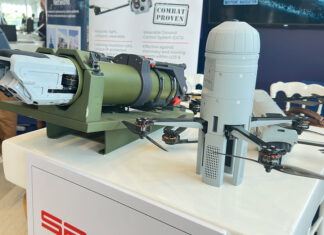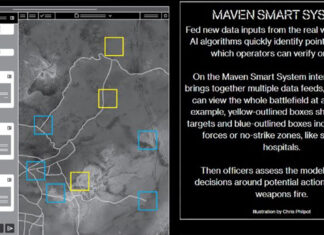One of the main challenges which surfaced in recent conflicts in Israel and Iraq is the shortage of bandwidth, particularly in frequencies allocated for datalinks (video and telemetry communications). New systems are already maturing, with the introduction of enhancements for current VHF and UHF communications systems, introduction of digital datalinks and utilization of existing infrastructure such as commercial and military cellular networks.
One of the primary efforts is to extract maximum data transfer capability available with existing communications links. This effort has already paid-off with excellent results, through enhancement of data-communications capability of Tadiran Communications’ CNR-9000 family of manpack and vehicular radios. The current version, CNR-9000 HDR unit can transfer 115 KBps over standard 25Khz spaced VHF tactical radio channels. Tadiran achieved this capability, considered to be the highest data rate over standard VHF channel on the market, through the use of advanced digital processing algorithms implemented into the current set, designed as a Software Defined Radio (SDR).
IAI/Elta is demonstrating their EL/S-8018B Data & Image Exchange Unit (DIDU) at LIC-2005 which facilitates data and high quality image transfer over standard VHF tactical radios. When video transfer is concerned, bandwidth restrictions become even more critical, requiring special compression to facilitate improved quality video exchange.
Visual Defense, a member of Emblaze Systems group which offers video transfer technology developed for commercial 3G cellular phones. The same technology facilitates video archiving and distribution over existing channels, as narrow as 10kbps, over TETRA (such as the Motorola communication’s Mountain Rose (cellular tactical network recently fielded by the IDF), and commercial GSM and GPRS cellular networks.
Tadiran Spectralink has fielded other technologies to address the datalinks bandwidth allocation challenge. The company’s StarLink family of miniature datalinks is designed to facilitate digital communications of video, data and telemetry, over a narrow bandwidth (up to a factor of 10 compared to existing datalinks). The datalink is designed for the new generation of miniature UAVs, which will be fielded in large numbers by small infantry units and Special Forces teams.



















